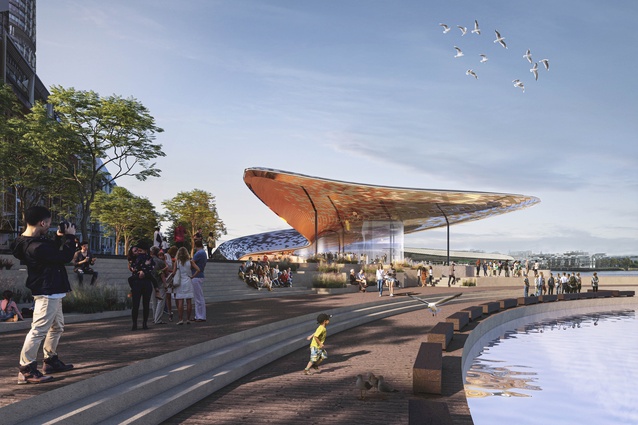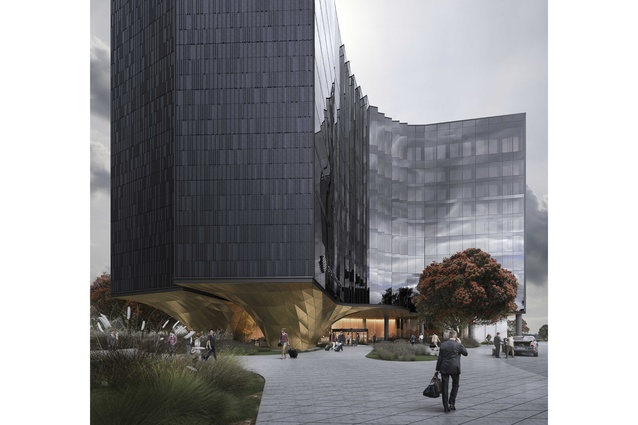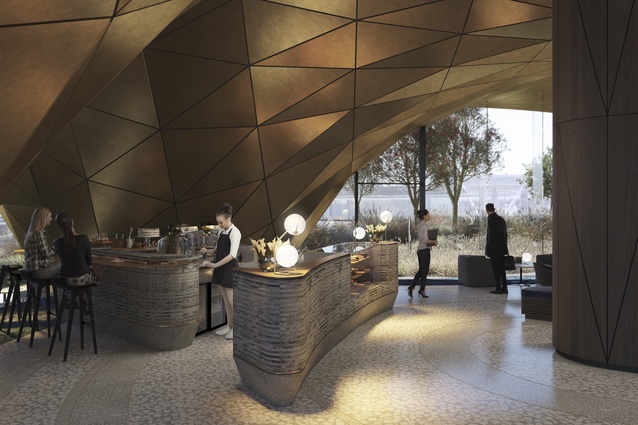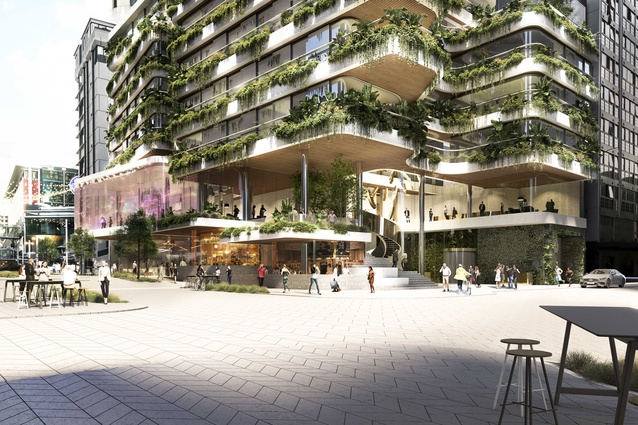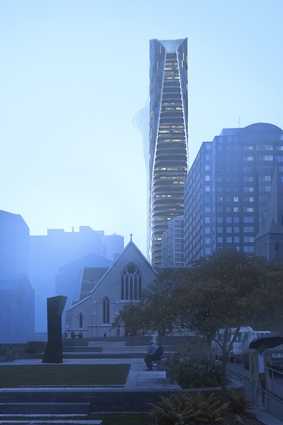From A(uckland) to Z(aha): Three years on
Warren and Mahoney's digital design lead, Matthew LeGrice, reflects on his three years in New Zealand since leaving Zaha Hadid Architects in London and the ways Aotearoa's AEC industry has embraced a digitally-led design approach.
Just over two years ago I wrote an article for ArchitectureNow, having recently returned from Zaha Hadid Architects (ZHA) in London, contemplating the journey and opportunities that lay ahead for me on my return to New Zealand.
At the time, there was a part of me that was still adjusting to life away from the creative cauldron that is London and ZHA; while another part of me was excited by the opportunity I had in front of me to bring some of my interests and experience back with me. I was keen to see what sort of an appetite there was within New Zealand for a digitally-led design approach and innovative philosophy.
Fast forward a couple of years and I think it’s fair to say that very few people would have predicted what the world has gone through in 2020. It has definitely given me a different perspective on my return home and a renewed appreciation for living and working in New Zealand.
When I returned to New Zealand, I took up a role at Warren and Mahoney (WAM) in their Auckland studio. I was drawn to the way WAM had been able to grow in scale and regional influence while maintaining strong creative rigour and a sense of purpose. Their commitment to their roots within Aotearoa and a sense of place and their ambition to take this design approach and their expertise to the world resonated with me.
Some six months ago this translated into me taking on the role as digital design lead within the practice. The role has been a vehicle for me to help push and explore new design techniques and technologies, as well as to give this way of working robust foundations and increased visibility across our studios in both New Zealand and Australia.
One of my concerns when I left ZHA to return home was that there might not be the interest, nor the opportunities for me to continue working in the way that I had when I was in London. As a result, one of the most exciting and rewarding aspects of my work at WAM to date has been the fact that those concerns haven’t materialised. During my time here, there’s been strong interest in the opportunities my background and skillset could provide within the practice’s creative direction, rather than trying to rebuild my interests and way of working to conform to an existing model. I’ve been able to work on various engaging projects with other voices, and they’ve resulted in us continuing to push the creative envelope and evolve our design methodologies.
While in London I predominantly worked in Rhino and Grasshopper (Rhino’s parametric design plug-in), with a bit of Maya occasionally for early concept work. I’ve been fortunate enough to continue using these tools for my work at WAM, and there’s a noticeable trend towards these digital tools here and across the industry more generally, particularly among more recent graduates.
Most of the more complex design work that I’ve done here in New Zealand has relied on a combination of these tools, albeit used in a slightly different manner to the work I did at ZHA. I think this speaks to the strength of design tools like Rhino, which has incredible utility and versatility in how it can be used and can provide different solutions to suit very different projects. The work I’ve been involved with recently perhaps doesn’t operate through formal complexity in quite the way that ZHA does, but there is a noticeable balance between restraint and complexity that requires the design tools we use to bridge various architectural languages. It has been a fulfilling experience to explore some of the skills I used overseas in a different application and context here in New Zealand.

Three such projects that come to mind that highlight this approach are the Federal Street Tower design competition in Auckland, the Barangaroo Pier Pavilion competition in Sydney, and the Te Arikinui Pullman Hotel at Auckland Airport, currently under construction.
These projects provided us with the opportunity to employ complex design and modelling tools as well as parametric design software. The Federal Street Tower competition was a well-publicised, invited competition within Auckland (where one of the firms we were up against was ZHA), while the Barangaroo Pier Pavilion was an open competition for a new public pavilion in the Barangaroo precinct in Sydney. The Pullman Auckland Airport on the other hand was already underway as a live project in our Auckland studio when I joined the practice, however, it was moving out of concept design and required the use of complex digital design tools to help advance and realise its design.
While the design directions grew for each of these projects from narratives and values of place, digital tools were used to help bring these concepts to life and mould them into an architectural language. In each project we extensively used Rhino, Grasshopper and Maya, amongst other pieces of software, to sculpt and formalise a design proposal that reflected the underlying narratives and concepts.
For the Federal Street Tower competition, we used Rhino and Grasshopper extensively for the tower geometry. The need for this was two-fold. Firstly, we needed to design with software that would allow us to communicate the more sinuous forms we were sketching. Secondly, we needed a workflow that would allow us to continually update and edit the tower form and detail as the competition process progressed. By setting our tower model up parametrically in Grasshopper we were able to quickly iterate and update the design in a fraction of the time it would have taken to model manually. Parametric models come into their own in these sorts of projects where you need to constantly update and iterate in a short space of time.
Similarly, the Barangaroo pavilion entry was done in a very short space of time and required a fast and efficient workflow. Given the formal complexity of our proposal, we started modelling the pavilion in Maya, which allowed us to produce the form quickly and intuitively before working the proposal up with further detail in Rhino and Grasshopper. The project was a good test for us in terms of how we can design quickly and intuitively in an efficient manner and to a high level of detail.
The Pullman Hotel was different in that it was a live project with a base design that needed developing with an eye to its eventual construction. As per the other projects, through the use of Rhino and Grasshopper, we were able to quickly iterate and update our design depending on the criteria and constraints. Beyond this, we were also able to feed information through to the wider design team and use that coordination process to help refine the design. To this extent, the Pullman Hotel has been a good project to illustrate the utility and versatility of Rhino and Grasshopper – on the one hand being able to operate as a high-level design tool, while on the other helping us to get into the design at the level of connection details and panel optimisation.
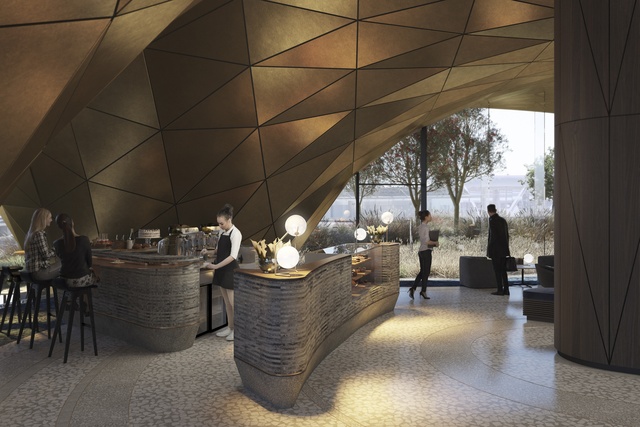
We’ve since continued to see other projects through the door that have lent themselves to the use of some of these tools and techniques and I’ve enjoyed a richness of opportunities to continue to push and develop some of the processes I learnt during my time overseas.
Aside from my project work, I also make time to keep testing out new tools and techniques – building concepts, ornaments, jewellery or abstract coded objects. As most in our field know well, our creative context rarely stands still. I find it an important part of my professional journey, particularly with my current role, to continue to learn and adapt as the world around us evolves.
Now that I’m settled back in New Zealand and have found my feet at Warren and Mahoney, I’m excited by the possible avenues and opportunities available through digital design. There’s an increasing consciousness in our industry of the role that digital technologies and design techniques can play in the industry going forward: A role that does not craft a universal and monotonous global design language, but instead provides powerful tools that elevate and heighten design responses ‘of place’ and provide design outcomes distinct to the region and our values.
I think there’s much more awareness today around what some of these digital design tools can offer us – both in terms of the design and delivery of our projects. There’s a keen interest to start to explore some of the ways that overseas firms have integrated digital design technologies into their processes. Equally, there’s an ambition to understand how these tools might be used within the context of New Zealand design and our unique influences. We have a strong connection to our land and culture here in Aotearoa, and ideas around the environment, sustainability and Te Ao Māori can all start to challenge some of these digital design tools in terms of what they can offer. I believe all of these ideas can also be extended through the use of digital design tools. Within WAM, I’ve seen a strong interaction between Te Ao Māori, sustainability and digital technology, and I think this provides direction for New Zealand design to excel in its unique way.
As we continue to navigate the pandemic, the design prospects within New Zealand, Australia and the Pacific Rim will be vast and varied. I feel that New Zealanders are uniquely placed to be creative leaders with our innovative mindset, early technology adoption and strong design sensibility. I’m hopeful for what the coming years might bring.


